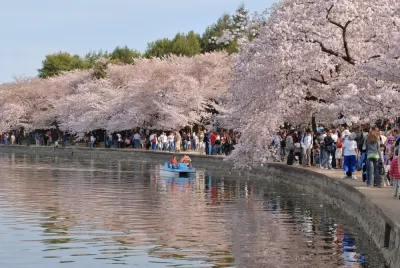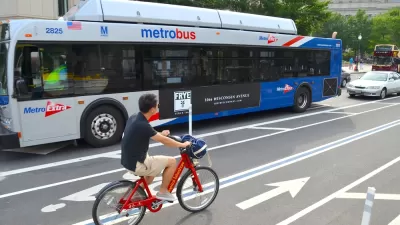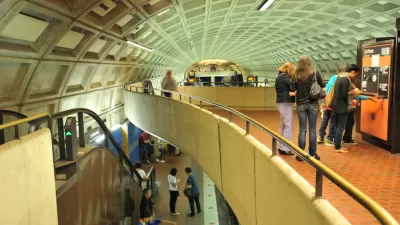Metro had the highest ridership numbers in more than seven years last Sunday as hundreds of thousands of cherry blossom enthusiasts crowded the system.

Washington, D.C.’s Metro rail system saw its busiest Sunday since 2015 last weekend as visitors swarmed to see the District’s famous cherry trees in bloom and attend the Blossom Kite Festival, reports Justin George for The Washington Post. “The rail system serviced more than 340,000 trips on Sunday, said transit agency spokeswoman Sherri Ly. That’s only 20,000 fewer than Wednesday, when Metro reported a pandemic-era high of 360,000 paid trips.”
As George explains, “Passenger counts meant long waits for some riders, but they were an encouraging development for a rail system that has lost about half its ridership since the pandemic began.”
The agency says it deployed extra trains and personnel to handle the crowds, which overwhelmed some popular stations. “Metro’s Blue, Orange and Silver lines experienced repeated delays, while the crush of crowds forced the rail system to close entrances to the Smithsonian station and make it exit-only for hours while transit officials urged riders to walk to nearby stations.”
As for those choosing to drive, conditions weren’t much better, George writes: “interstate tunnels and bridges were bumper-to-bumper while Hains Point and other Tidal Basin access points were transformed into virtual parking lots for hours.”
FULL STORY: Metro records busiest Sunday since 2015 as crowds swarmed cherry blossoms

Alabama: Trump Terminates Settlements for Black Communities Harmed By Raw Sewage
Trump deemed the landmark civil rights agreement “illegal DEI and environmental justice policy.”

Planetizen Federal Action Tracker
A weekly monitor of how Trump’s orders and actions are impacting planners and planning in America.

The 120 Year Old Tiny Home Villages That Sheltered San Francisco’s Earthquake Refugees
More than a century ago, San Francisco mobilized to house thousands of residents displaced by the 1906 earthquake. Could their strategy offer a model for the present?

Opinion: California’s SB 79 Would Improve Housing Affordability and Transit Access
A proposed bill would legalize transit-oriented development statewide.

Record Temperatures Prompt Push for Environmental Justice Bills
Nevada legislators are proposing laws that would mandate heat mitigation measures to protect residents from the impacts of extreme heat.

Downtown Pittsburgh Set to Gain 1,300 New Housing Units
Pittsburgh’s office buildings, many of which date back to the early 20th century, are prime candidates for conversion to housing.
Urban Design for Planners 1: Software Tools
This six-course series explores essential urban design concepts using open source software and equips planners with the tools they need to participate fully in the urban design process.
Planning for Universal Design
Learn the tools for implementing Universal Design in planning regulations.
Clanton & Associates, Inc.
Jessamine County Fiscal Court
Institute for Housing and Urban Development Studies (IHS)
City of Grandview
Harvard GSD Executive Education
Toledo-Lucas County Plan Commissions
Salt Lake City
NYU Wagner Graduate School of Public Service





























